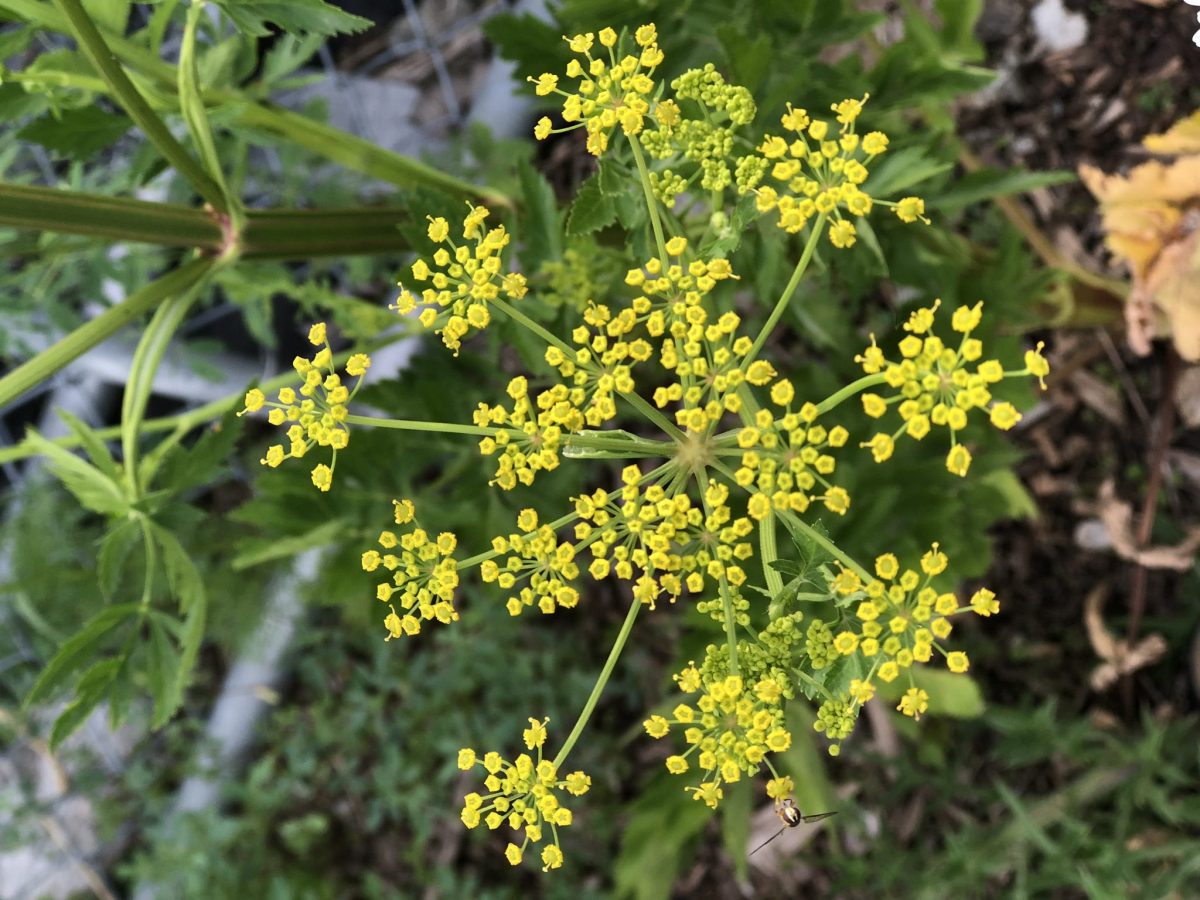Wild Parsnip
Wild Parsnip is an invasive plant native to Eurasia and is toxic to humans. Contact with sap can cause severe burns when exposed to sunlight. If exposure is suspected, wash the area with soap and water, cover it for 48 hours, and watch for a reaction. The sap can also cause blindness if it gets into the eyes.
What it looks like

| Form | A non-woody plant that can grow to a height of 0.5 to 1.5 metres tall. |
|---|---|
| Habitat | Areas exposed to full sun, such as roadsides, trails, shorelines, ditches, beaches, forest clearings and waste areas. |
| Leaves | Alternates on the stem, divided into 2 to 5 pairs of smaller leaflets and one terminal leaflet, at approximately 15 centimetres in length total, with saw-toothed edges. |
| Flowers | Small and yellow 5-petalled flowers grow in clusters. |
| Fruits and seeds | Seeds about 6 millimetres long, oval, and once matured, split into 2 sections which are flat, smooth, round, and 5 to 7 millimetres long. |
| Stem | A single light green, deeply grooved, and hollow stem that is smooth (with few hairs), and typically 2.5 to 5 centimetres in diameter. |
Similar-looking species include Queen Anne’s Lace, Giant Hogweed, Cow Parsnip and Great Angelica. To learn more about Wild Parsnip and see more pictures, visit the Ontario Invasive Plant Council.
How it spreads
Wild Parsnip seeds are dispersed through water, wind or on vehicle equipment. Once seeds enter an area, dense stands form quickly and outcompete native species.
What you can do
The City controls and monitors Wild Parsnip populations that pose a direct risk to human health. Report a possible location of Wild Parsnip online or call 311 (905-615-4311 outside City limits).